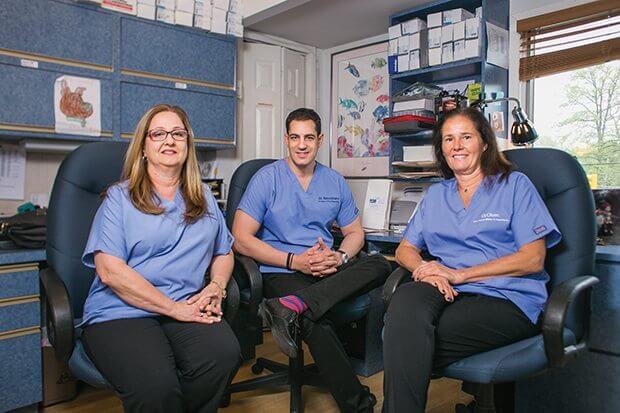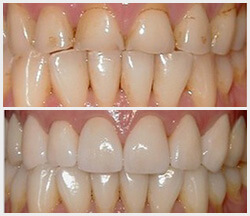If you suffer from temporomandibular joint disorder (TMD), you may have already tried various non-surgical treatments, such as medications, physical therapy, and splints. But if these options have failed to provide relief, you may be considering surgical options. Discover what each procedure entails, who may be a candidate, and what to expect during and after surgery.
When Is Surgery for TMD the Best Option?
When it comes to treating a temporomandibular joint disorder, surgery is usually a last resort after non-surgical options have been exhausted. However, there are situations where surgery for TMD may be the best option.
Factors to consider include:
- Severe Joint Damage: If you have significant joint damage, such as advanced osteoarthritis or dislocated discs, surgery may be necessary to repair or replace the damaged tissue.
- Limited Jaw Movement: If TMD is causing limited jaw movement that affects your daily activities, surgery may be the best option to improve jaw function and quality of life, surgery may be necessary to correct the problem.
- Ineffective Non-Surgical Treatments: If you have tried non-surgical treatments, such as medications, physical therapy, and splints without finding relief from TMD symptoms, surgery may be the best option.
- Persistent Pain: Pain that affects your quality of life and isn’t relieved by non-surgical treatments may indicate that surgery is needed.
TMD surgery isn’t without risks and potential complications, and should only be considered after a thorough evaluation by a healthcare provider. However, for those with severe joint damage, limited jaw movement, or persistent pain, Our Staten Island dentists may determine that surgery is the best option to improve your jaw function and quality of life.
Surgical Treatment Options for TMD
Arthrocentesis
Arthrocentesis is a minimally invasive surgical procedure in which a small needle is inserted into the joint space to irrigate the joint and remove any debris or inflammatory substances. This procedure can help reduce pain and improve jaw function. This procedure can be performed on an outpatient basis, and most patients can return to normal activities within a few days of the procedure.
Arthroscopy
Arthroscopy is a minimally invasive surgical procedure that uses a small camera and surgical instruments to diagnose and treat joint problems. During an arthroscopy for TMD, a small incision is made near the joint, and the camera is inserted to view the joint’s interior. This procedure can remove inflamed tissue or repair a torn disc. Your oral surgeon may also smooth out rough or uneven surfaces, reducing pain and improving jaw movement.
Open Joint Surgery
Open joint surgery is a more invasive surgical option for TMD, during which the joint is opened to allow the surgeon better access to the joint’s interior. This procedure may be necessary for those with severe joint damage, such as advanced osteoarthritis or dislocated discs. The surgeon may remove damaged tissue, repair or replace the disc, or reposition the jaw during the surgery.
Total Joint Replacement
Total joint replacement involves replacing the entire joint with an artificial joint. This option is typically reserved for those with severe joint damage that cannot be repaired through other surgical methods. Your oral surgeon will remove the damaged joint and replace it with an artificial joint made of metal, plastic, or a combination of both. The artificial joint replicates the natural joint’s movement, allowing for improved jaw function and reduced pain.
TMD Surgery Recovery and Aftercare
The recovery time for TMD surgery will depend on the specific procedure performed and the individual patient. Generally, patients can expect to experience some pain and swelling for the first few days after surgery and should plan to take a few days off work or school to rest. Depending on the extent of the surgery, full recovery can take anywhere from a few weeks to several months.
Aftercare tips for TMJ surgery may include:
- Pain Management: Pain is a common side effect of TMD surgery, and your LOCATION oral surgeon will likely prescribe pain medication to help manage discomfort.
- Dietary Restrictions: After TMD surgery, you may be advised to follow a soft or liquid diet for some time to avoid putting undue stress on the jaw joint. It’s critical to follow these dietary restrictions to ensure proper healing.
- Physical Therapy: Depending on the procedure, your oral surgeon may recommend physical therapy to help improve jaw function and reduce pain. Physical therapy may include exercises to improve your jaw’s range of motion and strengthen the jaw muscles.
- Follow-Up Appointments: After TMD surgery, you’ll likely have several follow-up appointments with your healthcare provider to monitor your recovery and ensure proper healing.
- Lifestyle Changes: Depending on the underlying cause of your TMD, your healthcare provider may recommend lifestyle changes to help manage symptoms and prevent future TMD flare-ups.
Frequently Asked Questions
Who doesn’t qualify for TMJ surgical treatment?
Not all patients with TMD are good candidates for surgical treatment. Those who haven’t tried non-surgical treatments, such as medications or physical therapy, may not be eligible for surgery. Patients with significant joint damage or limited jaw movement may also not be good candidates for surgery. Your doctor will evaluate your case and recommend the best treatment options.
What are the risks associated with TMD surgery?
As with any surgery, there are risks associated with TMD surgery. These can include bleeding, infection, nerve damage, and damage to surrounding tissues. Your doctor will discuss these risks with you and take steps to minimize them. Follow all pre-operative and post-operative instructions carefully to reduce the risk of complications.
How can I prepare for TMD surgery?
Yes! Stress is a common trigger for TMD symptoms, so stress management techniques like meditation, deep breathing exercises, and muscle relaxation techniques can help alleviate symptoms. Stress management may be included as part of a comprehensive treatment plan for TMD.
Will TMD surgery completely cure my symptoms?
While TMD surgery can provide significant relief from symptoms, it may not completely cure the condition. It’s important to work closely with your doctor to manage any ongoing symptoms or complications. Post-operative physical therapy or other treatments may be necessary to optimize the results.
Start your Journey to a Life Without Jaw Pain
If you’re experiencing symptoms of TMD and have not found relief through non-surgical treatments, it may be time to consider surgical options. Talk to your oral surgeon about whether you may be a good candidate for surgical treatment and what your options are.
Don’t let TMD symptoms continue to impact your daily life — take action and explore your treatment options today. Call our Staten Island office today to schedule a consultation.



Insurance
We accept many insurances. Please contact one of our Insurance Coordinators to discuss your dental coverage plan.
(718) 948 5111
appointments@sidental.com
Open 7 days a week
Reviews
The dentists are absolutely excellent…
“I have been going here for years. The dentists are absolutely excellent and they always have an appointment available that fits into a busy schedule. I also completed invisilgn and my teeth are perfectly straight now. They also practice preventive medicine and just went in for my 6 month cleaning. Every time feel like I have a new set of choppers and best yet the check up noted no cavities!.”
— J.R
Pleasant visit
“As usual, it was a pleasant visit thanks to Dr. Nasso and her great staff..”
— C.M.
Always treated with courtesy and respect.
“Always treated with courtesy and respect. All of my questions were answered regarding upcoming treatments..”
— J.C.
Smile Profile




Put your best face forward.
Create a positive change to your teeth and your smile.
